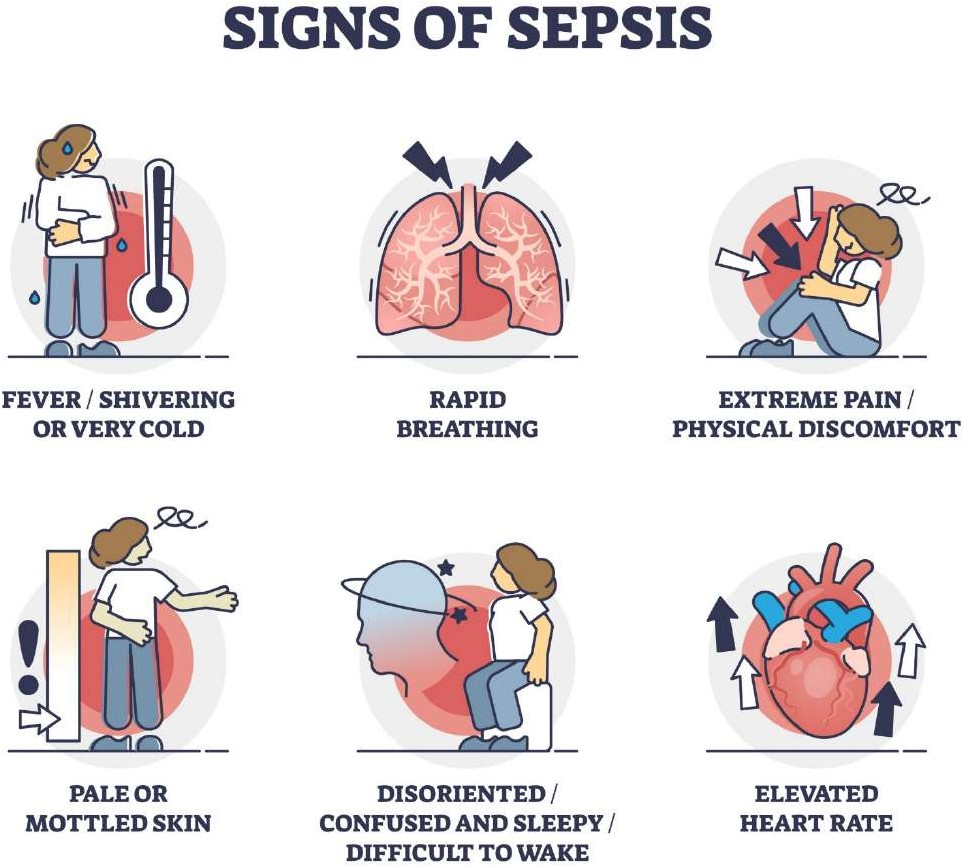A nurse is providing care to a client who has peritonitis. Which of the following conditions is the highest priority for
the nurse to monitor?
Heart atack
Diabetes
Respiratory failure
Sepsis
The Correct Answer is D
Choice A reason: While a heart atack is a serious condition, it is not directly related to peritonitis. Peritonitis can lead to systemic infection, which may indirectly affect the heart, but it is not the primary concern in the immediate care of peritonitis.
Choice B reason: Diabetes is a chronic condition that requires ongoing management. However, it is not the most immediate threat when a client is diagnosed with peritonitis. The nurse should continue to monitor blood glucose levels as part of routine care.
Choice C reason: Respiratory failure can be a complication of peritonitis if the infection spreads and affects other systems. However, the primary concern with peritonitis is the potential for the infection to lead to sepsis.
Choice D reason: Sepsis is a life-threatening condition that can occur as a complication of peritonitis. It happens when the body's response to infection causes injury to its own tissues and organs. Monitoring for signs of sepsis is crucial because early intervention can be lifesaving.

Nursing Test Bank
Naxlex Comprehensive Predictor Exams
Related Questions
Correct Answer is B
Explanation
Choice A reason: A high calcium diet and high blood calcium levels are not directly related to pyelonephritis.
Choice B reason: Recurrent UTIs can lead to pyelonephritis, especially if the infections ascend to the kidneys.
Choice C reason: Long-term use of ibuprofen can affect kidney function but is not a direct cause of pyelonephritis.
Choice D reason: Genetic diseases can affect kidney health, but there is no common genetic disease that directly causes pyelonephritis.
Correct Answer is ["2"]
Explanation
Step 1: The total amount of diphenhydramine required per dose is 50 mg.
Step 2: Each tablet contains 25 mg of diphenhydramine.
Step 3: To find out how many tablets are needed, we divide the total amount required by the amount in each tablet. So, 50 mg ÷ 25 mg/tablet.
Step 4: The result is 2 tablets.
So, the nurse should administer 2 tablets per dose. This is already a whole number, so no rounding is necessary.
Whether you are a student looking to ace your exams or a practicing nurse seeking to enhance your expertise , our nursing education contents will empower you with the confidence and competence to make a difference in the lives of patients and become a respected leader in the healthcare field.
Visit Naxlex, invest in your future and unlock endless possibilities with our unparalleled nursing education contents today
Report Wrong Answer on the Current Question
Do you disagree with the answer? If yes, what is your expected answer? Explain.
Kindly be descriptive with the issue you are facing.
